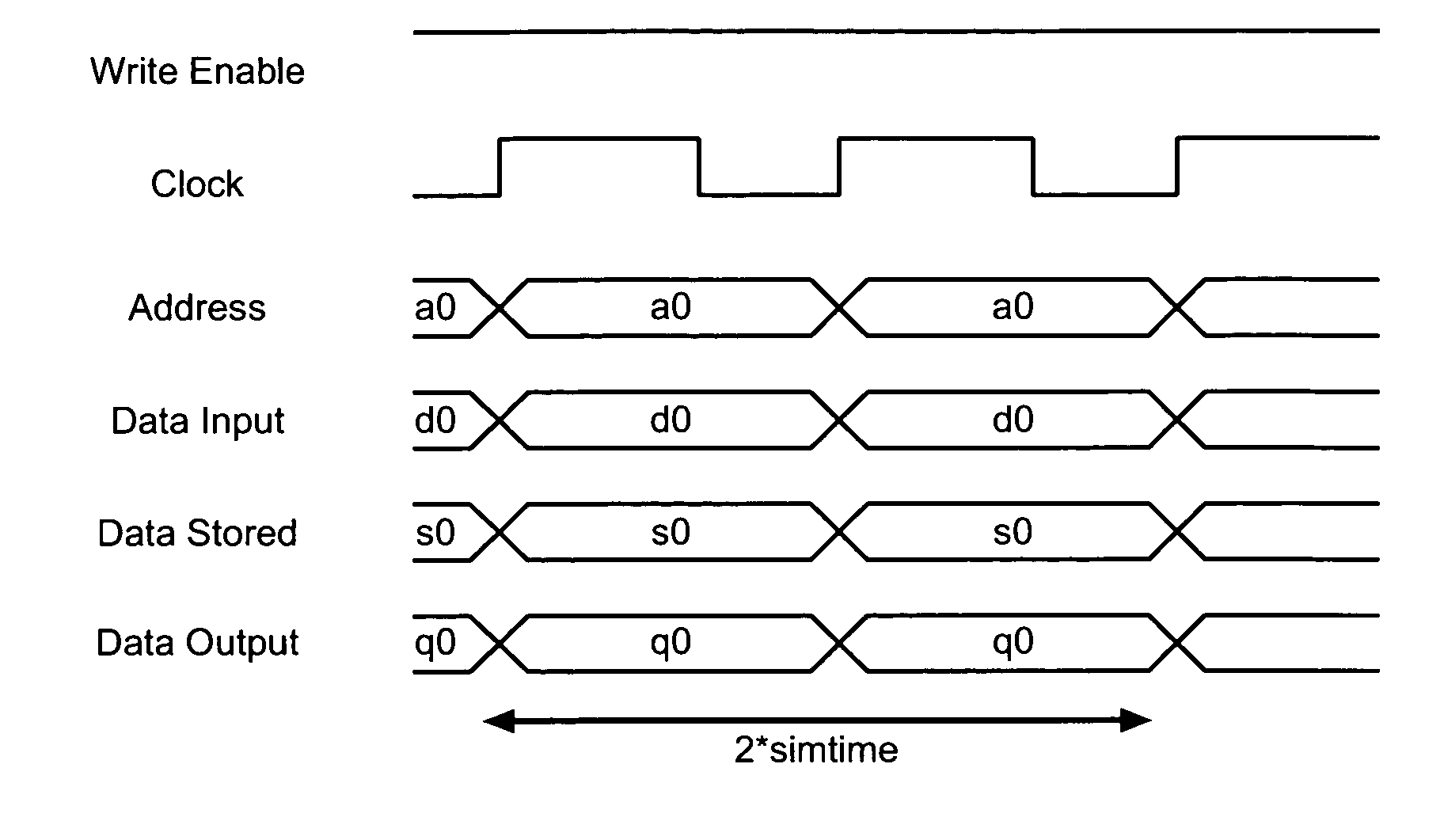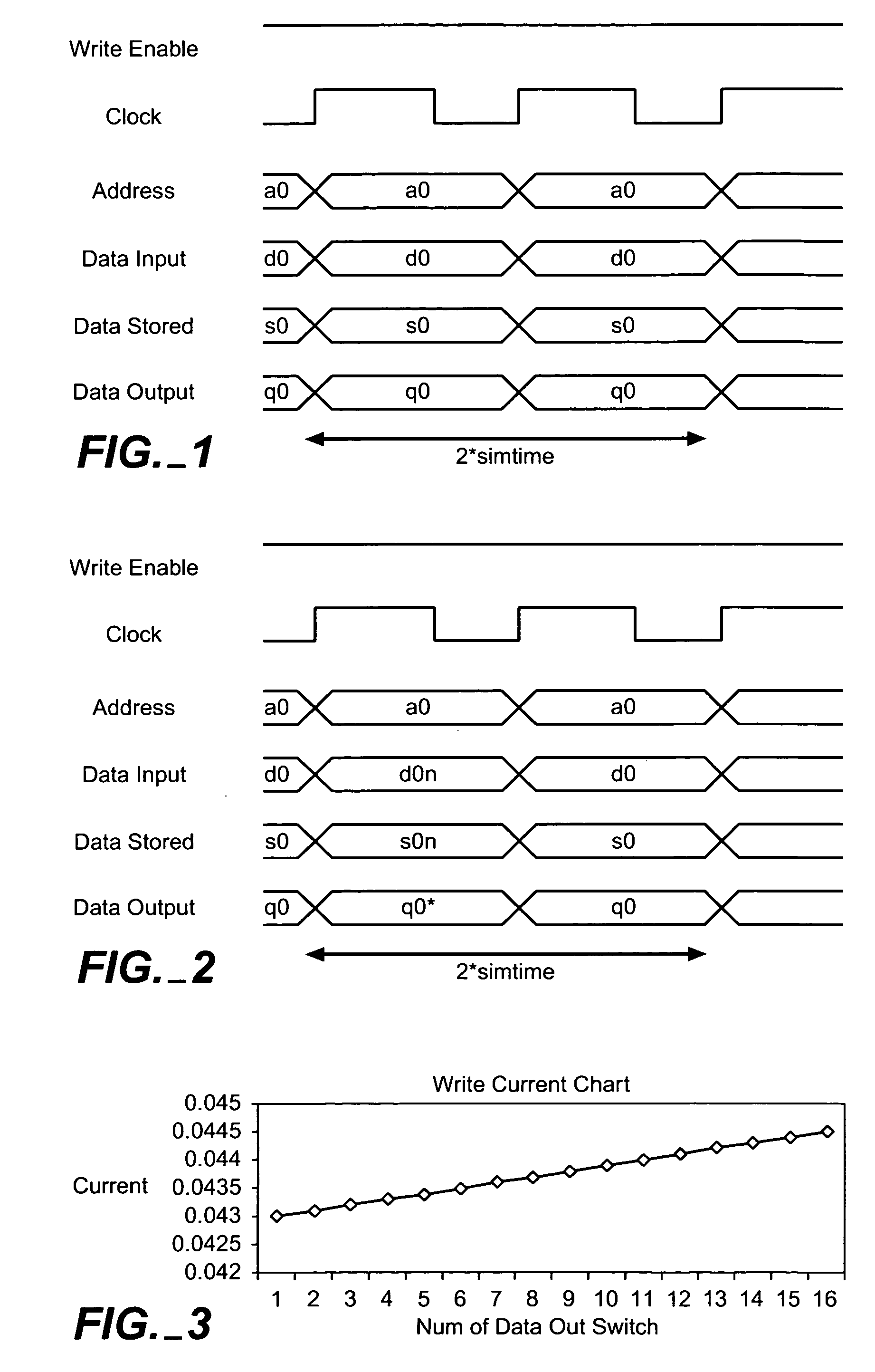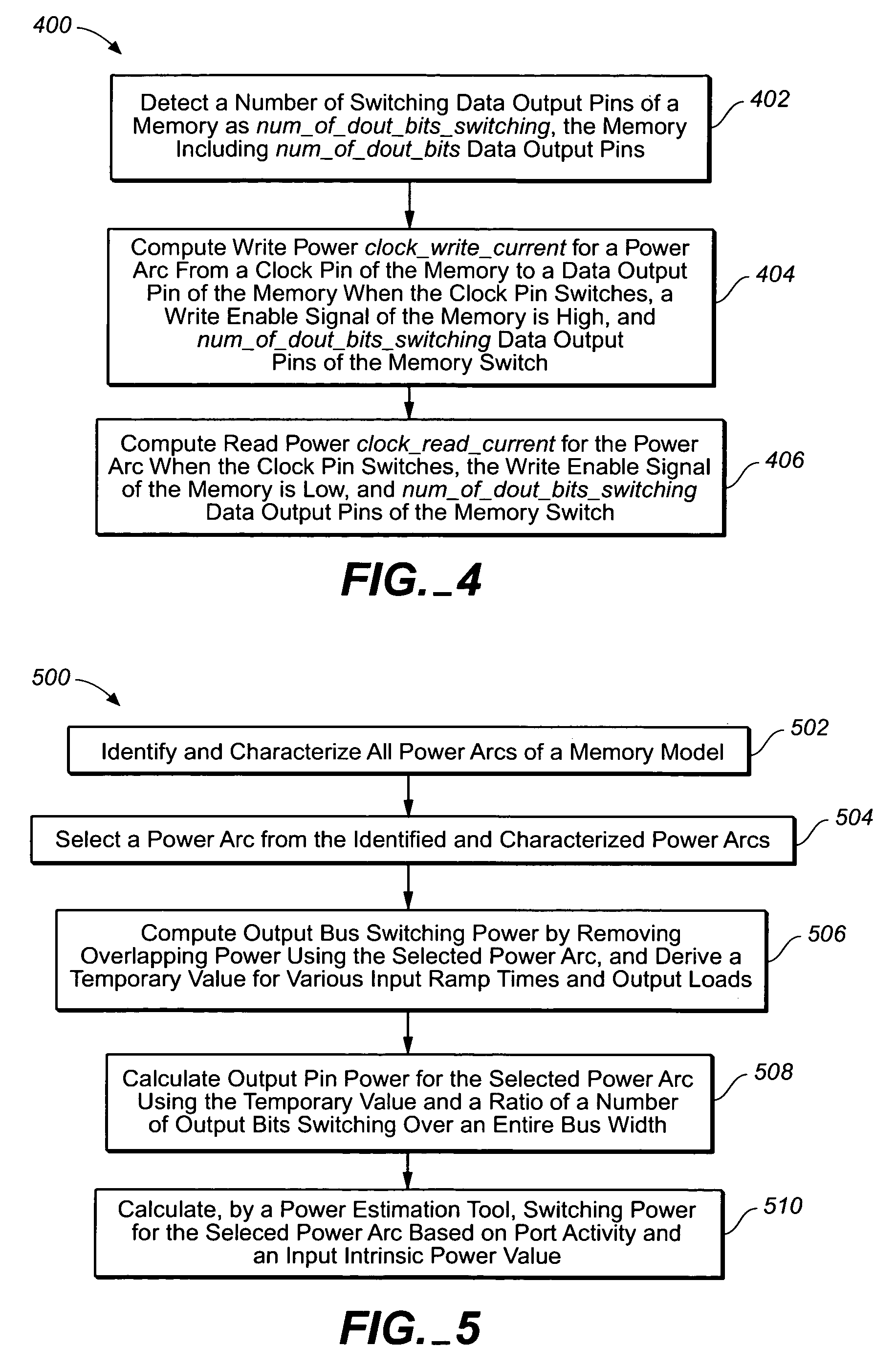Accurate pin-based memory power model using arc-based characterization
a memory power model and accurate technology, applied in the field of integrated circuits, can solve the problems of difficult to accurately define the characterization of memory power for estimation tools, difficult to model memory power using pin-based characterization, and more complex memory power models, so as to avoid redundancy and accurately estimate power
- Summary
- Abstract
- Description
- Claims
- Application Information
AI Technical Summary
Benefits of technology
Problems solved by technology
Method used
Image
Examples
Embodiment Construction
[0017] Reference will now be made in detail to the presently preferred embodiments of the invention, examples of which are illustrated in the accompanying drawings.
[0018] The present invention provides a new pin-based power model using arc-based characterization to accommodate with a pin-based library format such as the Liberty library format, and the like. The present invention characterizes and specifies the power for each pin in a memory in such a way that they do not overlap with each other so that they can be combined to estimate the power accurately. The present invention characterizes the full spectrum of the power arcs from the various input pins to the data output pins.
[0019] The detailed description of a pin-based memory power model for a power arc from a clock pin clka to a data output pin dout is in order. However, it is understood that a same or similar pin-based memory power model may be used for other power arcs of the memory and the estimation tool may use the mode...
PUM
 Login to View More
Login to View More Abstract
Description
Claims
Application Information
 Login to View More
Login to View More - R&D
- Intellectual Property
- Life Sciences
- Materials
- Tech Scout
- Unparalleled Data Quality
- Higher Quality Content
- 60% Fewer Hallucinations
Browse by: Latest US Patents, China's latest patents, Technical Efficacy Thesaurus, Application Domain, Technology Topic, Popular Technical Reports.
© 2025 PatSnap. All rights reserved.Legal|Privacy policy|Modern Slavery Act Transparency Statement|Sitemap|About US| Contact US: help@patsnap.com



